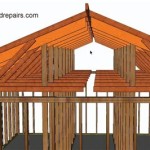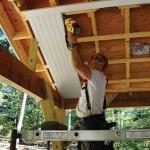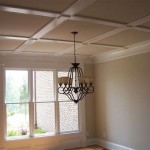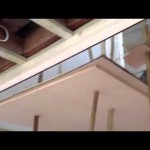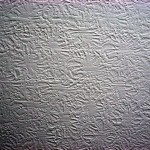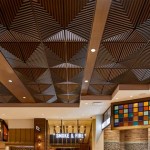Cost of False Ceiling in One Room Oregon: A Comprehensive Guide
False ceilings, also known as dropped ceilings or suspended ceilings, are a popular choice for homeowners and businesses in Oregon seeking to enhance the aesthetics, acoustics, and functionality of their spaces. Determining the cost of installing a false ceiling in a single room in Oregon involves considering various factors, ranging from material selection and room size to labor expenses and regional price variations. This article provides a detailed breakdown of the cost components associated with false ceiling installation, offering insights into how to estimate expenses effectively.
The primary purpose of a false ceiling is to create a secondary ceiling suspended below the existing structural ceiling. This void between the two ceilings can be used to conceal wiring, ductwork, and plumbing, improving the overall appearance of the room. Furthermore, false ceilings can contribute to improved thermal insulation, soundproofing, and lighting effects. The type of material used significantly influences the final cost, as do the complexity of the design and the expertise required for installation.
In Oregon, the cost of materials and labor can fluctuate depending on the location. Urban areas like Portland and Eugene may experience higher labor costs compared to more rural regions. Similarly, the specific building codes and regulations in different Oregon counties can also impact the overall project expense. Hence, a thorough understanding of these factors is crucial for accurate budgeting.
Key Factors Influencing False Ceiling Costs in Oregon
Several key elements contribute significantly to the overall cost of installing a false ceiling in a single room in Oregon. These factors need to be carefully evaluated to develop a realistic budget and avoid unexpected expenses during the project. A comprehensive understanding of these elements will allow homeowners and businesses to make informed decisions and optimize their investments.
Material Selection: The material chosen for the false ceiling has a substantial effect on the total cost. Common materials include gypsum, mineral fiber, PVC, and metal. Gypsum boards are a popular and relatively affordable option, offering good fire resistance and sound insulation properties. Mineral fiber tiles, known for their excellent acoustic performance, are often used in commercial settings. PVC panels are lightweight, moisture-resistant, and easy to clean, making them suitable for bathrooms and kitchens. Metal ceilings, while durable and aesthetically pleasing, tend to be more expensive than other options. The price per square foot for each material can vary significantly, impacting the total material cost.
Room Size and Complexity: The dimensions of the room and any irregularities in its shape will influence the amount of material required and the complexity of the installation process. Larger rooms naturally require more materials, increasing the overall cost. Irregular shapes, such as angled walls or intricate architectural features, may necessitate custom cutting and fitting, adding to the labor time and potentially increasing material waste. Complex designs, such as multi-tiered ceilings or those with intricate patterns, also add to the installation time and require more skilled labor.
Labor Costs: Labor costs represent a significant portion of the total expense when installing a false ceiling. The hourly rate for experienced installers in Oregon can vary depending on their level of expertise, the complexity of the project, and the location. Licensed and insured contractors typically charge higher rates than independent handymen, but they also offer greater assurance of quality workmanship and adherence to building codes. It is essential to obtain multiple quotes from different contractors to compare pricing and services offered. Requesting references and reviewing online testimonials can provide valuable insights into the contractor's reputation and past performance.
Breaking Down the Cost Components
To effectively estimate the total cost of a false ceiling installation, it is necessary to break down the project into its individual components. This detailed analysis allows for a more accurate assessment of expenses and helps identify potential areas for cost savings. By understanding the cost implications of each element, homeowners and businesses can make informed decisions about material selection, design choices, and contractor selection.
Material Costs: As previously mentioned, the cost of materials depends on the type chosen. Gypsum boards typically range from $1 to $3 per square foot, while mineral fiber tiles can cost between $2 and $5 per square foot. PVC panels are generally priced at $1.50 to $4 per square foot, and metal ceiling systems can range from $5 to $15 per square foot or even higher, depending on the specific type and finish. In addition to the ceiling panels themselves, other materials such as suspension grids, fasteners, and trim pieces must also be factored into the material cost. These additional components can add approximately 10% to 20% to the overall material expense.
Installation Costs: Labor costs generally range from $2 to $6 per square foot, depending on the complexity of the project and the experience of the installer. This includes the cost of preparing the room, installing the suspension grid, cutting and fitting the ceiling panels, and cleaning up the work area. Complex designs and intricate patterns may require more time and skill, resulting in higher labor costs. Some contractors may charge a flat rate for the entire project, while others may bill hourly. It is crucial to clarify the billing method and any potential additional charges before commencing the work.
Additional Costs: Several other costs may arise during the installation process. These could include expenses for removing and disposing of the existing ceiling, if necessary. Electrical work, such as rewiring or installing new light fixtures, can also add to the overall cost. Permits may be required by local building codes, particularly for commercial projects or renovations involving structural changes. Unexpected structural issues or the need for additional repairs can also lead to unforeseen expenses. Setting aside a contingency fund of approximately 10% to 15% of the total estimated cost can help cover these unexpected expenses.
Estimating the Cost: A Practical Example
To illustrate how to estimate the cost of a false ceiling installation, consider a rectangular room in Oregon measuring 12 feet by 15 feet, totaling 180 square feet. The homeowner chooses to install a gypsum board false ceiling with a basic grid design. The following example outlines a potential cost breakdown:
Material Costs: Gypsum board costs $2 per square foot, resulting in a total material cost of $360 (180 sq ft x $2/sq ft). Suspension grid, fasteners, and trim pieces are estimated at 15% of the gypsum board cost, adding an additional $54 (15% x $360). The total material cost is therefore $414.
Installation Costs: Assuming a labor cost of $4 per square foot, the installation cost would be $720 (180 sq ft x $4/sq ft).
Additional Costs: Electrical work to install recessed lighting is estimated at $200. A contingency fund of 10% is added, amounting to $133.40 (10% x ($414 + $720 + $200)).
Total Estimated Cost: The total estimated cost for the false ceiling installation in this example would be $1467.40 ($414 + $720 + $200 + $133.40). This example is for illustrative purposes only, and the actual costs may vary depending on the specific circumstances and the contractor chosen.
It is important to note that this is a simplified example. More complex designs, higher-end materials, or unexpected issues can significantly affect the final cost. Obtaining detailed quotes from multiple contractors and carefully reviewing the scope of work is essential for accurate budgeting.
In addition to these direct costs, consider the long-term benefits of installing a false ceiling. Improved energy efficiency from better insulation, enhanced soundproofing, and aesthetic improvements can all contribute to increased property value and a more comfortable living or working environment. These factors should be weighed against the initial investment when making a decision about installing a false ceiling.
When initiating a false ceiling installation project in Oregon, homeowners and businesses should prioritize thorough planning, accurate budgeting, and careful contractor selection. By understanding the various cost components and potential challenges involved, it is possible to ensure a successful and cost-effective project that enhances the functionality and aesthetics of the space.

Ceiling Tiles Aluminum Copper Pvc Styrofoam Decorative

How Much Does It Cost To Install A Drop Ceiling 2025 Data

Fifth Wall Wonder Oregon Home

Ceiling Tiles Aluminum Copper Pvc Styrofoam Decorative

Ceiling Tiles Aluminum Copper Pvc Styrofoam Decorative

Basement Drop Ceiling Tiles Finishing

How Much Does A Drop Ceiling Cost In 2025 Homeguide

How Much Does Ceiling Repair Cost 2025 Data

20 Designs As Alternatives To False Ceilings At Home

How To Remove A Drop Ceiling 1905 Farmhouse
Related Posts


